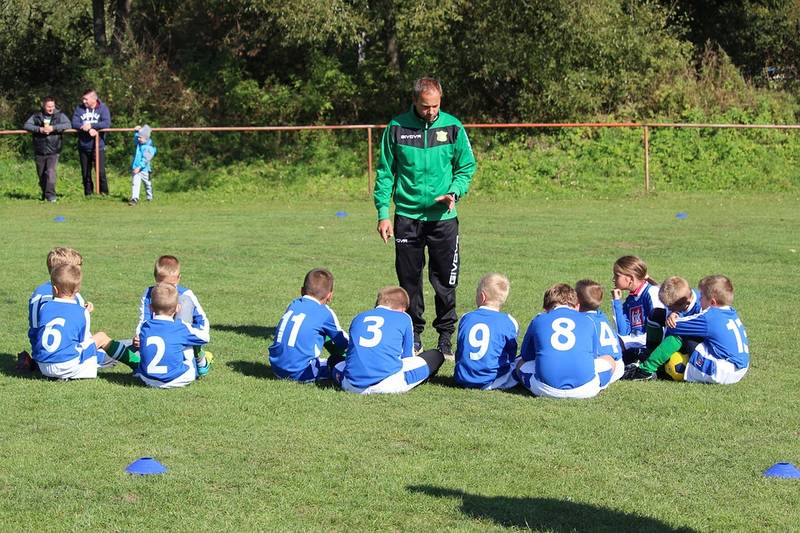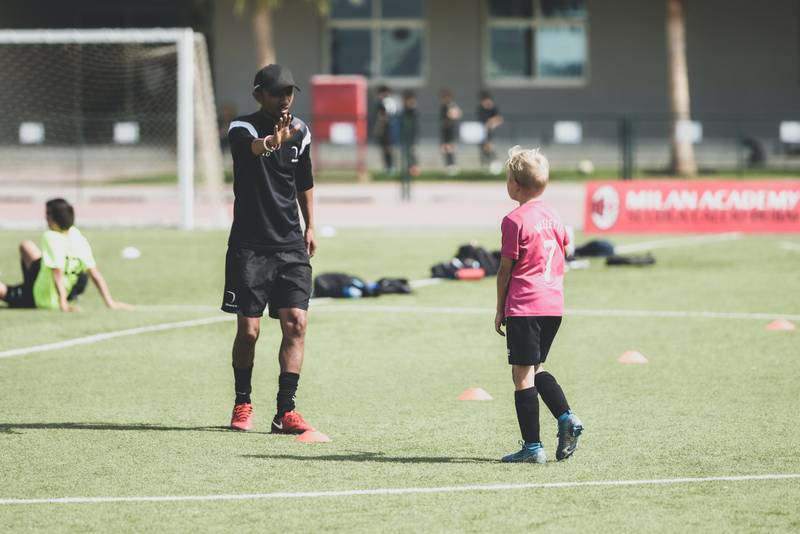Planning effective football training sessions can be a daunting task for coaches at any level. A well-designed football coaching planner helps organise training drills, match preparations, and season objectives in one accessible place. The right coaching planner transforms scattered ideas into structured sessions that develop players' technical skills, tactical understanding, and physical fitness while maximising valuable training time.
Modern football coaching planners have evolved beyond simple notebooks, offering digital solutions that allow coaches to create, store, and share detailed session plans with players and coaching staff. These tools typically include features for scheduling practices, designing custom drills with visual diagrams, and tracking player development throughout the season. Many coaches find that having a comprehensive planning system helps them maintain consistency in their coaching approach.
The best planners provide flexibility for grassroots football coaches who often work with limited resources and varied skill levels. Whether you're managing a youth academy team or coaching weekend warriors in amateur leagues, a thoughtful planning approach can elevate your coaching effectiveness. Football (or soccer, as it's known in some regions) may be unpredictable during matches, but training sessions should be anything but – structured planning ensures every minute on the training ground contributes to player and team development.
Essentials of Football Coaching
Effective football coaching requires a deep understanding of the sport, clear communication skills, and the ability to develop players both technically and mentally. A structured approach helps coaches deliver consistent training while adapting to their team's specific needs.
Understanding the Sport
Football is a complex game that requires more than just knowledge of rules and positions. Coaches must understand tactical systems, formation variations, and how strategies evolve throughout a match. This understanding creates the foundation for effective training sessions.
Reading the game situationally is crucial. Coaches should recognise patterns of play, identify spaces on the pitch, and anticipate movement sequences to guide player development effectively.
A good coach maintains awareness of current trends and innovations in football. The sport constantly evolves with new training methodologies, tactical approaches, and technological aids that can enhance performance.
Game analysis skills help coaches break down matches into learnable components. This includes recognising why certain attacks succeeded, how defensive structures held firm, and which transitions proved most effective.
The Role of a Soccer Coach
The primary responsibility of a coach is player development. This encompasses technical skill improvement, tactical understanding, physical conditioning, and mental resilience.
Coaches serve as motivators who inspire players to perform at their best. They create environments where athletes feel supported yet challenged to grow.
Team management extends beyond training sessions. Coaches must handle match preparations, player selections, and maintain positive relationships with players' families in grassroots settings.
Communication forms the backbone of effective coaching. Clear, concise instructions during training sessions ensure players understand expectations and objectives.
A coach's role includes being an educator who imparts knowledge progressively. This means structuring learning experiences that build upon previous lessons and match players' developmental stages.
Key Coaching Qualities
Patience stands as perhaps the most essential quality, particularly for grassroots coaches. Player development takes time, and progress often comes in small, inconsistent increments.
Adaptability allows coaches to modify their approaches based on player responses, match situations, and changing circumstances. No single coaching method works for every player or team.
Strong observational skills help coaches identify technical details that require correction. The ability to spot minor flaws in technique can make significant differences in player development.
Emotional intelligence enables coaches to understand players' psychological states and respond appropriately. This includes knowing when to challenge players and when to offer support.
Organisation skills ensure efficient use of training time. Well-structured sessions with clear objectives maximise player development opportunities and maintain engagement throughout the season.
Structuring Training Sessions
Properly structured football training sessions are essential for player development and team success. Well-organized sessions maintain player focus, build skills progressively, and ensure tactical concepts are effectively communicated.
Designing Effective Drills
When designing drills, follow the 'Three Rs approach' – relevant, realistic and repetitive. Each drill should target specific skills while reflecting game scenarios players will encounter during matches.
Begin sessions with dynamic warm-ups that incorporate ball work rather than static stretching. This prepares players physically while maximizing contact time with the ball.
Progress from simple to complex drills. Start with technical exercises in smaller groups before expanding to larger tactical components. For example, move from passing drills to positional play to small-sided games.
Time management is crucial. Plan approximately 15-20 minutes per drill to maintain intensity and focus. Always prepare alternative versions to scale difficulty up or down based on player response.
Include transition periods between drills to allow for water breaks and brief feedback. These moments provide valuable coaching opportunities without disrupting session flow.
Tactical Training Focus
Tactical training should align with your team's playing philosophy and upcoming match requirements. Each session should have a clear tactical theme, such as defensive shape, attacking transitions, or set pieces.
Use visual aids like tactic boards or cones to illustrate concepts before players execute them. This helps players understand their positional responsibilities within the team structure.
Implement progressive tactical complexity by starting with unopposed movements before adding passive defenders and finally full opposition. This builds confidence while gradually increasing decision-making demands.
Small-sided games with modified rules can emphasise specific tactical elements. For instance, awarding bonus points for goals scored after particular passing patterns reinforces desired tactical behaviors.
Video analysis sessions can complement practical training by showing professional examples of tactical concepts. This connects training ground work to real-match applications.
Maximizing Player Engagement
Engagement begins with clear session objectives. Start each training by explaining what skills or concepts players will develop and why they matter. This creates purpose and motivation.
Incorporate competitive elements to maintain intensity. Even simple drills can become engaging when coaches add time challenges, point systems or team competitions.
Create opportunities for player input through questioning rather than constant instruction. Ask players to solve tactical problems, encouraging critical thinking and ownership.
Vary your training formats regularly. Rotation between skills circles, random passing exercises, and game-based activities keeps sessions fresh and challenging for players.
Tailor activities to different learning styles. Some players learn visually, others through demonstration, and some through trial and error. A balanced approach ensures all players can grasp concepts effectively.
Tactical Planning and Execution
Effective tactical planning forms the backbone of successful football coaching. The right approach combines formation selection with adaptive strategies that respond to match situations and opponent strengths.
Formulating Winning Formations
The foundation of tactical success begins with selecting appropriate formations. Coaches must consider their squad's strengths, weaknesses, and playing style when deciding between options like 4-4-2, 4-3-3, or 3-5-2.
Player positioning is crucial for maximising effectiveness. Each formation creates different triangles and passing lanes on the pitch, influencing how teams build attacks and defend against opponents.
Key formation considerations:
- Player attributes and technical abilities
- Opposition's typical formation and style
- Desired pressing intensity and defensive shape
- Available personnel and injury situations
Most successful coaches maintain a primary formation while developing at least one alternative system. This flexibility allows tactical adjustments during matches when chasing goals or protecting leads.
Adaptive Tactical Planning
Tactical plans must evolve both between and during matches. Smart coaches prepare specific tactical notes for various match scenarios, anticipating when they might need to shift approaches.
Common match scenarios requiring tactical adjustment:
- Going a goal down/up
- Player sent off (own team or opposition)
- Weather conditions deteriorating
- Opposition formation change
Preparation for these scenarios should include set-piece strategies, which remain among the most efficient scoring methods in grassroots football. Many coaches utilise dedicated planning tools to document these plans.
Digital solutions have revolutionised tactical planning. Modern coaches can quickly sketch formations, create animations of player movements, and share tactical concepts with players before training sessions.
The most effective tactical plans balance complexity with clarity. Players at amateur levels benefit from straightforward instructions that can be executed consistently under match pressure.
Football Coaching Tools
Effective football coaches rely on a combination of traditional and modern tools to develop players, plan sessions, and analyse performance. The right coaching tools can significantly enhance training quality and team development.
Essential Coaching Equipment
Every football coach needs reliable equipment to run effective sessions. Training bibs in different colours help distinguish teams during practice matches and tactical drills. A collection of varied cones allows for setting up agility courses, marking zones, and creating defined training areas. Stopwatches are crucial for timing drills and maintaining session pacing.
Quality footballs in sufficient quantities ensure players aren't waiting in queues during technical practice. A portable whiteboard serves as an invaluable pitch-side visual aid for explaining tactics. Many coaches act as the architect of training by using mini-goals to create game-realistic scenarios in confined spaces.
Whistles, pump needles, and first aid kits round out the essential kit. Weather-appropriate clothing and a coaching bag for organisation complete the basic equipment inventory.
Utilizing a Coaching Notebook
A coaching notebook serves as the foundation for organised session planning and reflection. Many successful coaches maintain detailed records of training sessions, match observations and player development notes.
Coaches should divide their notebook into sections: session plans, match analysis, player evaluations, and season goals. This structured approach helps track progress over time. The physical act of writing plans by hand often enhances memory and commitment to the session structure.
Notes on what works well and areas for improvement provide valuable reference points for future planning. Sketching formations and set-piece arrangements in the notebook allows quick visualisation of tactical concepts. The best notebooks include waterproof pages for typical British weather conditions.
Software and Apps for Tactical Insights
Digital tools have revolutionised how coaches analyse performance and communicate with players. Modern platforms offer comprehensive features for tracking player statistics, creating visual training plans, and developing tactical strategies.
Video analysis tools enable coaches to review matches and identify patterns in play that might be missed during the game. Many platforms provide drawing tools to highlight positioning, movement paths, and tactical observations on freeze-frames from match footage.
Training plan builders help coaches create professional, shareable session plans with diagrams. Some solutions track player attendance, fitness data, and performance metrics to inform decision-making. These digital tools can sync across devices, allowing coaches to access their plans anywhere.
Teams using performance analysis software typically show faster tactical development compared to those using traditional methods alone. The best platforms offer customisable dashboards focusing on the metrics most relevant to a team's development goals.













